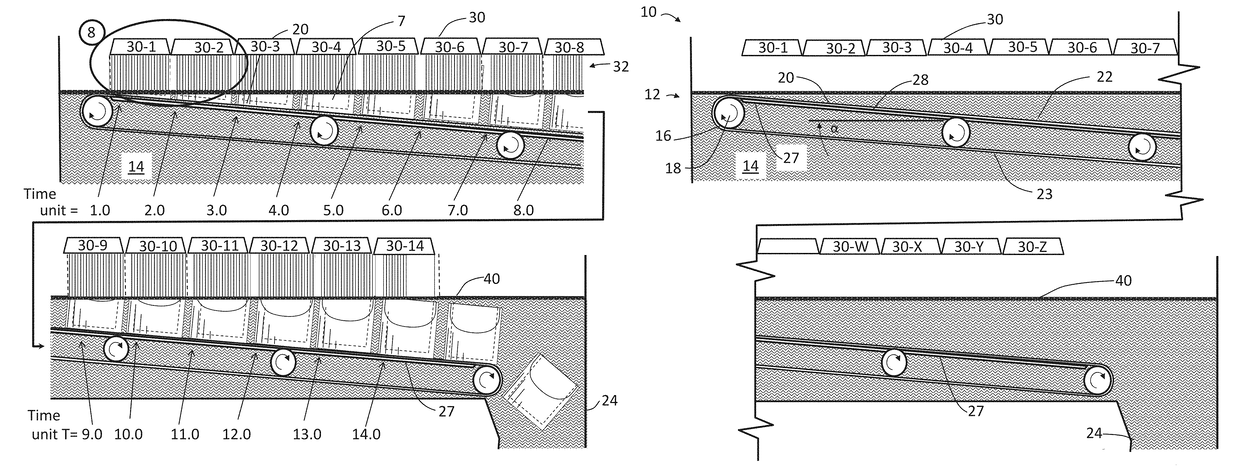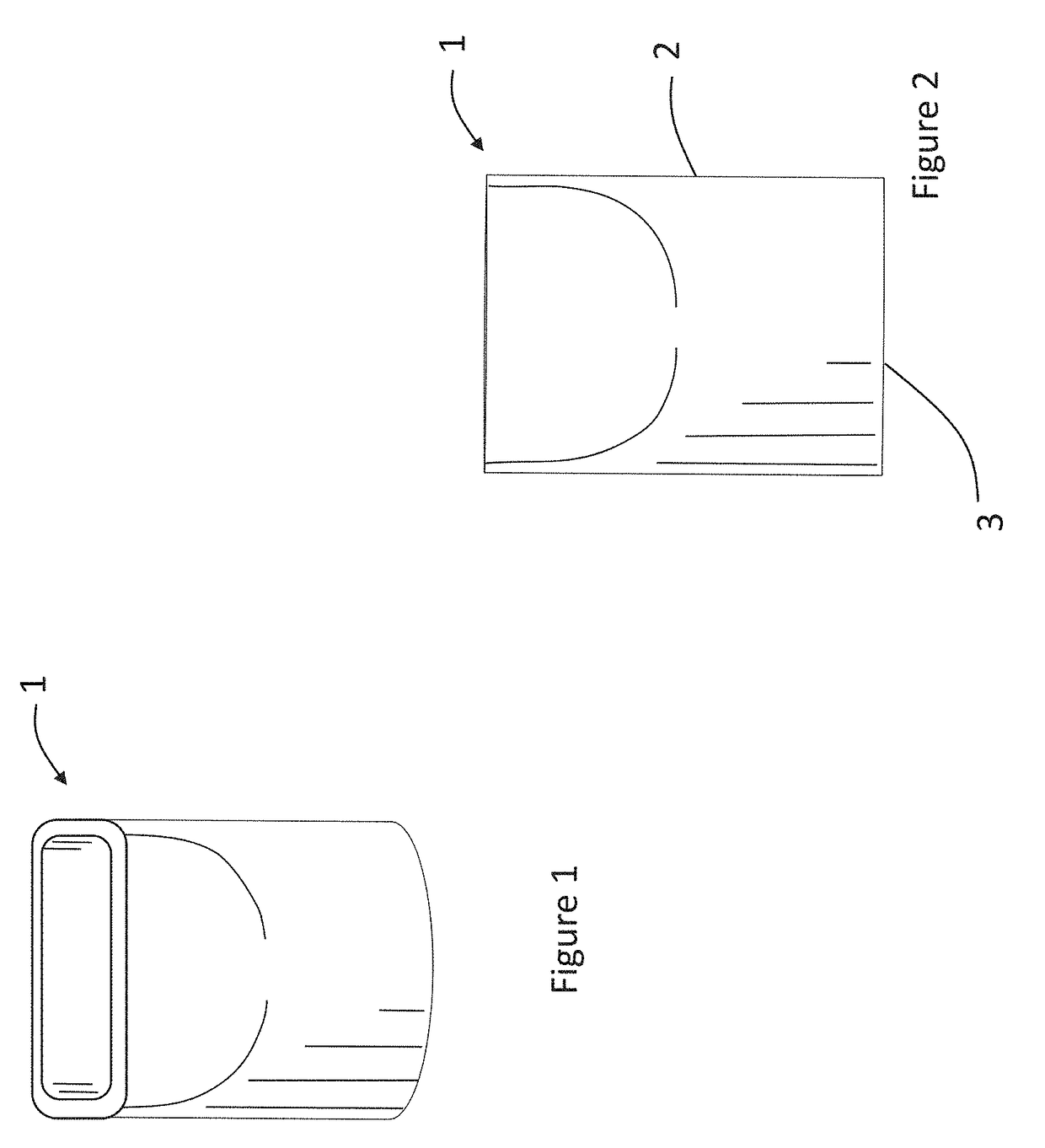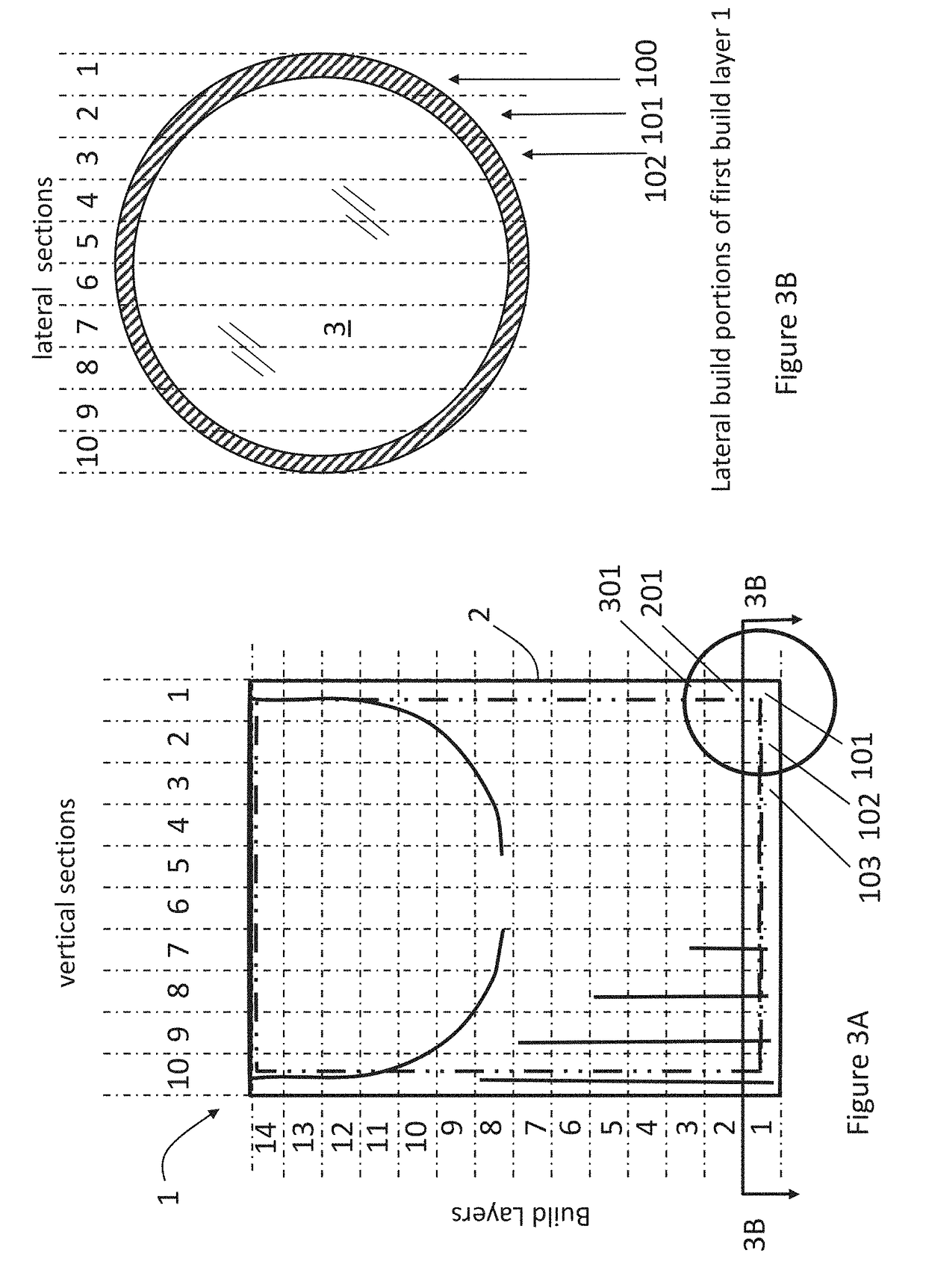Apparatus and method for forming 3D objects
a technology of 3d objects and build devices, applied in the direction of additive manufacturing processes, manufacturing tools, manufacturing data acquisition/processing, etc., can solve the problems of increasing complexity, precision, and care that must be undertaken in the design and use of 3d printers, and severely limit the build surface for high-throughput applications, so as to improve the smoothing of objects and resolution
- Summary
- Abstract
- Description
- Claims
- Application Information
AI Technical Summary
Benefits of technology
Problems solved by technology
Method used
Image
Examples
Embodiment Construction
[0067]The present disclosure includes printer apparatuses for printing a three-dimensional (3D) object, particularly by continuously conveying a build platform along the length of an elongated container and either descending down into or ascending up from a contained build fluid. The printing apparatuses described herein have several advantages over conventional printing apparatuses to print 3D objects. Other present 3D-printing methods require a substantially horizontal build platform upon which to build the 3D object through an additive manufacturing process. While horizontal build platforms are convenient to manufacture and incorporate into the design of printing apparatuses, the trade-off is that several other components, including the build platform itself, require the capability to adjust their vertical positions along the z-axis in order to successively print a new layer onto the emerging 3D object. This situation increases the amount of time required to print a desired 3D ob...
PUM
| Property | Measurement | Unit |
|---|---|---|
| length | aaaaa | aaaaa |
| velocity | aaaaa | aaaaa |
| period of time | aaaaa | aaaaa |
Abstract
Description
Claims
Application Information
 Login to View More
Login to View More - R&D
- Intellectual Property
- Life Sciences
- Materials
- Tech Scout
- Unparalleled Data Quality
- Higher Quality Content
- 60% Fewer Hallucinations
Browse by: Latest US Patents, China's latest patents, Technical Efficacy Thesaurus, Application Domain, Technology Topic, Popular Technical Reports.
© 2025 PatSnap. All rights reserved.Legal|Privacy policy|Modern Slavery Act Transparency Statement|Sitemap|About US| Contact US: help@patsnap.com



